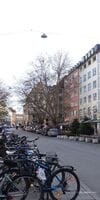Tal Street is one of the most important streets in the historic old town of Munich.
The street was originally located outside the first medieval city wall and begins at the Church of the Holy Spirit, which in turn was also built outside the walls and was used as a church for the first Munich hospital.
Historically, the street tal was part of the Bavarian Salzstrasse salt road (Salzstraße), which led from Salzburg (Austria) and bad Reichenhall (Germany, Bavaria) via Munich and Landsberg am Lech to Switzerland.
The street name dates back to documents in 1253, testifies to the fact that the street got its name "Tal" since the 13th century.
Today, the street is tal located in the Eastern part of the historic old town of Munich. It stretches almost in a straight line from the Northwest to the Southeast and connects to a part of the Old city Isartor city gate.
The length of the street is about 400 meters.
Street tal is characterized as a shopping street. Along the street, both historic and more modern buildings, which are residential and commercial premises, including shops, cafes and restaurants with tables under the open sky.
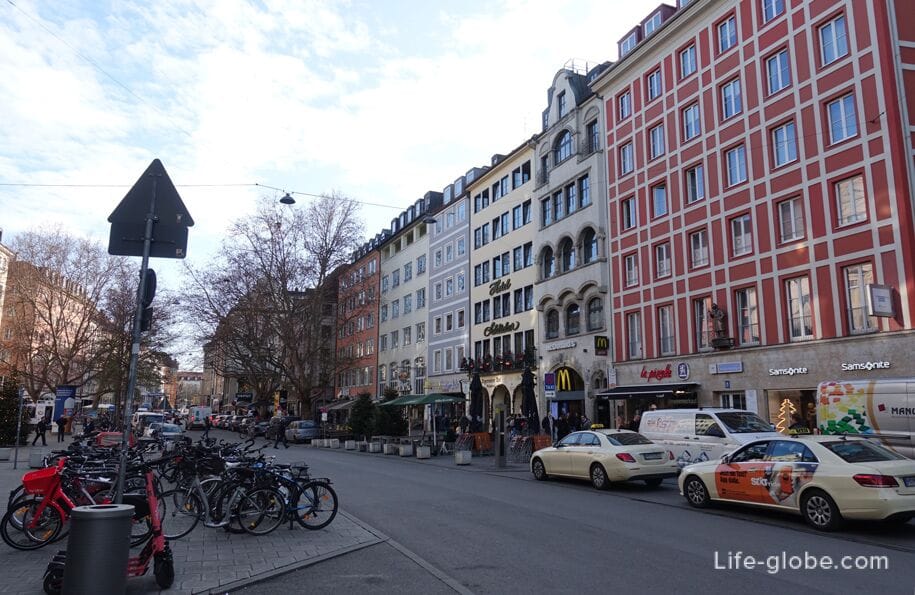
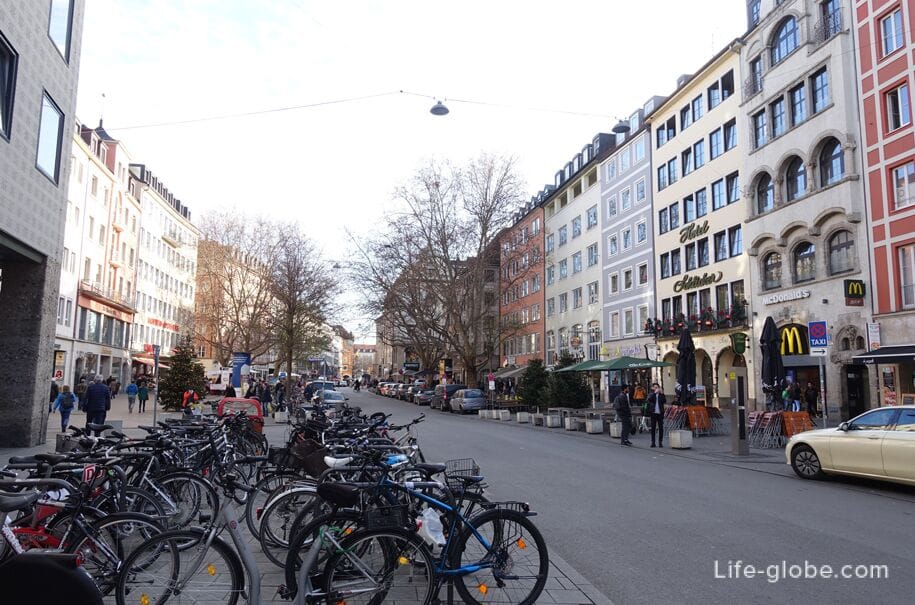
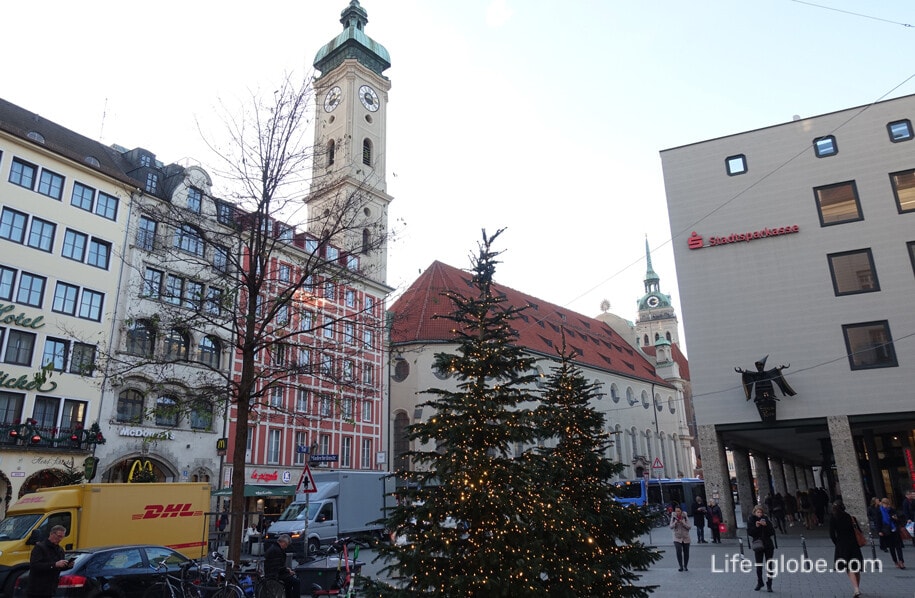
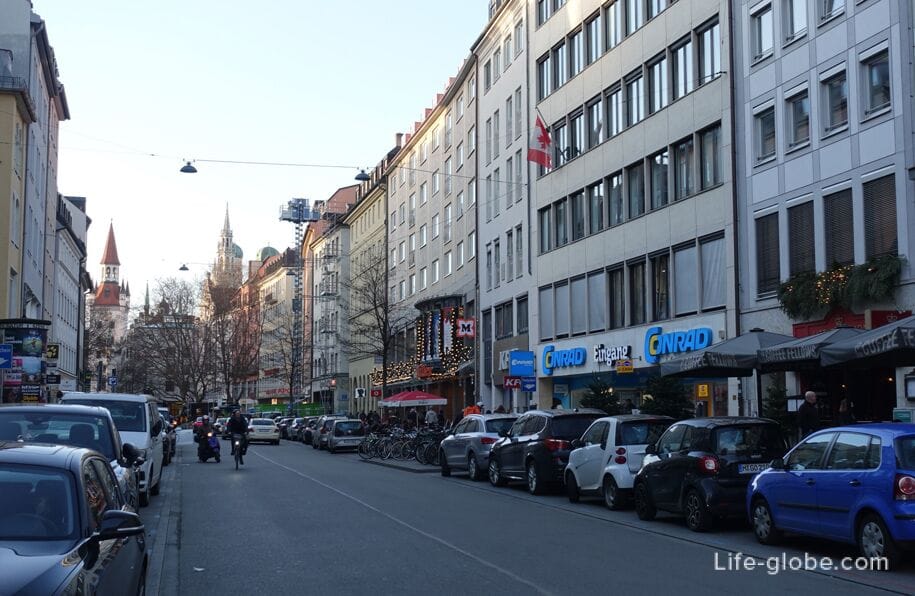
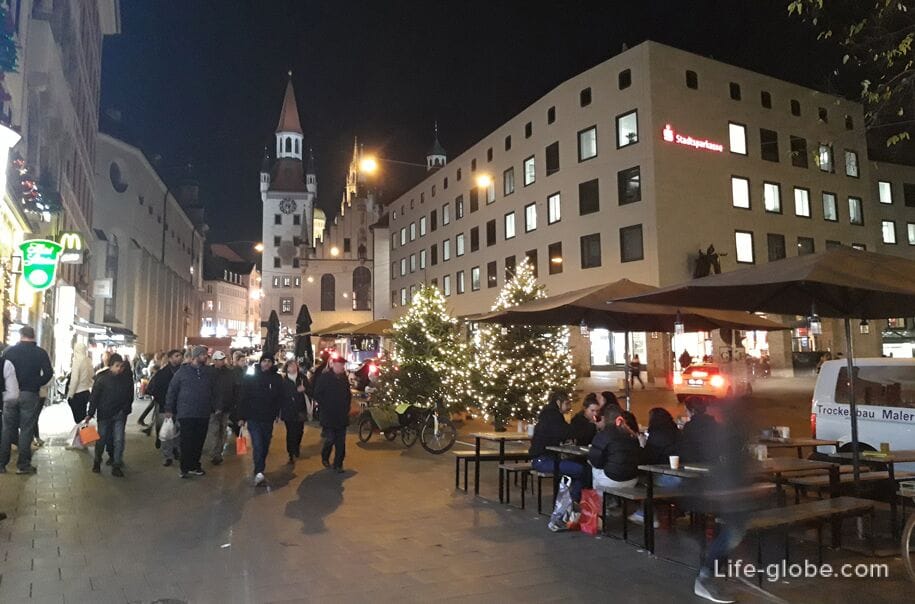
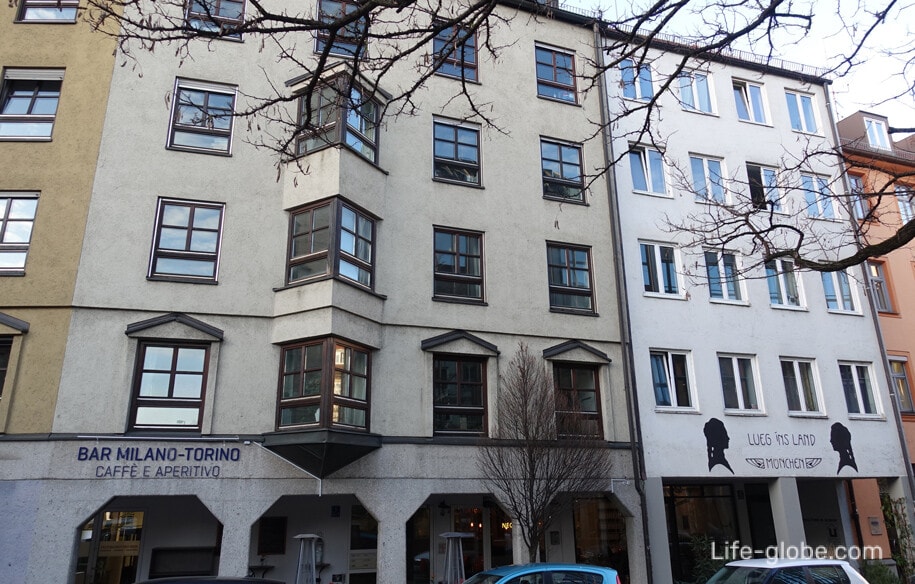

Objects on the street tal
Old town hall
The North-Western end of the street characterizes the Old town hall (Altes Rathaus), one of the attractions of Munich and Dating back to the 14th century.
The east (rear) facade of the town hall faces the Tal Street. While the main (western) facade of the Old Town Hall adorns the central square of the city - Marienplatz.
The old town hall arose in part from an old Munich city fortifications, including: the former tower gate - Alburger (Talburgtor), built in the late 12th century and were part of the first city wall of medieval Munich, was converted into the town hall tower, 56 meters high.
Today part of the Old town hall is a toy Museum (Spielzeugmuseum), situated on four floors of the town hall tower. Read more about Old town hall and toy Museum...
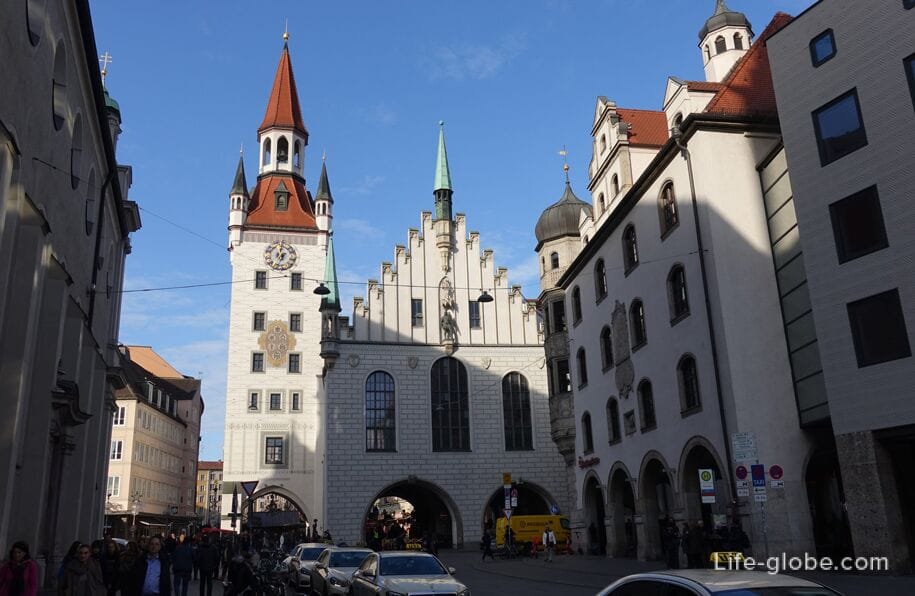
The building of the Bank "Stadtsparkasse München"
In Munich the Bank "Stadtsparkasse" there are several buildings. The head office is located in a historic building occupying an entire block and South wing which faces the street tal. The address of the building: Sparkassenstrasse, 2 (Sparkassenstraße).
The oldest part of the building was built by Hans Graceham in the period from 1889 to 1899 years in the neo-Renaissance style. After the Second world war, from 1956 to 1958, architect Werner Eichberg built outbuilding which continued building down to the street Materbates (Maderbräustraße). From 1989 to 1992 architect Paolo Nestler turned the courtyard of the building in a glass hallway to a Bank office.
In addition to the Bank branch today, the walls of the buildings are commercial premises, including shops and cafes.
View of the southwest wing of the building (the intersection of hoist and Sparkassenstrasse)
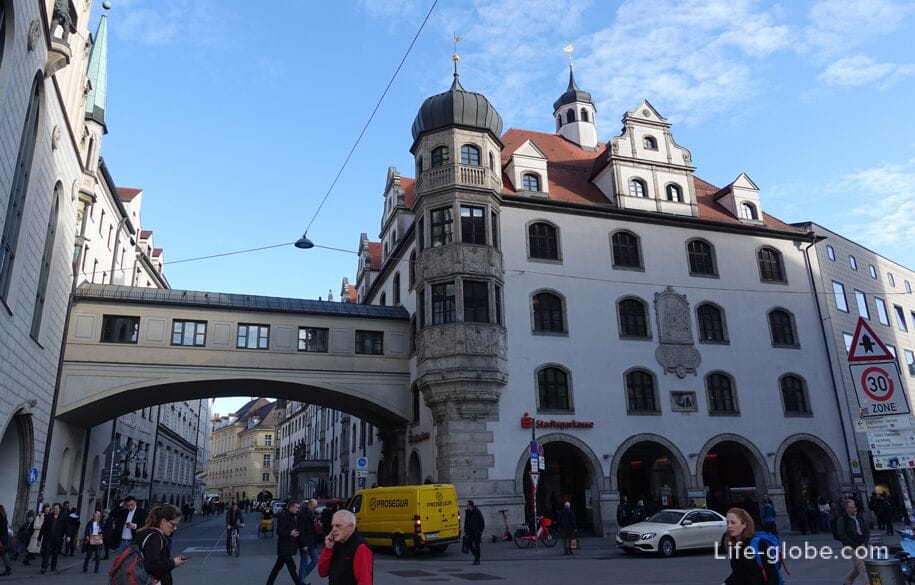
The view to the North West and the West wing of the building (street Sparkassenstrasse and Ledererstr / Ledererstraße)
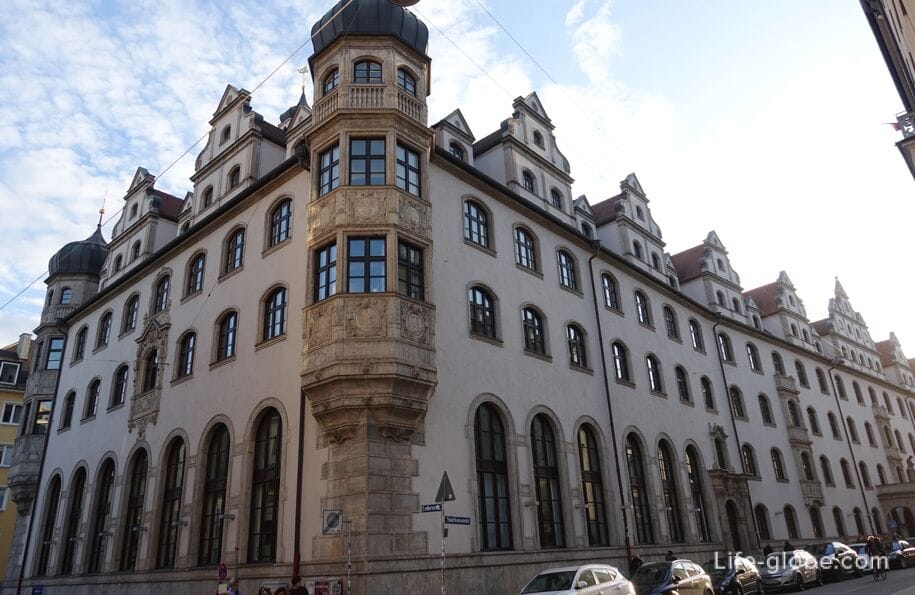
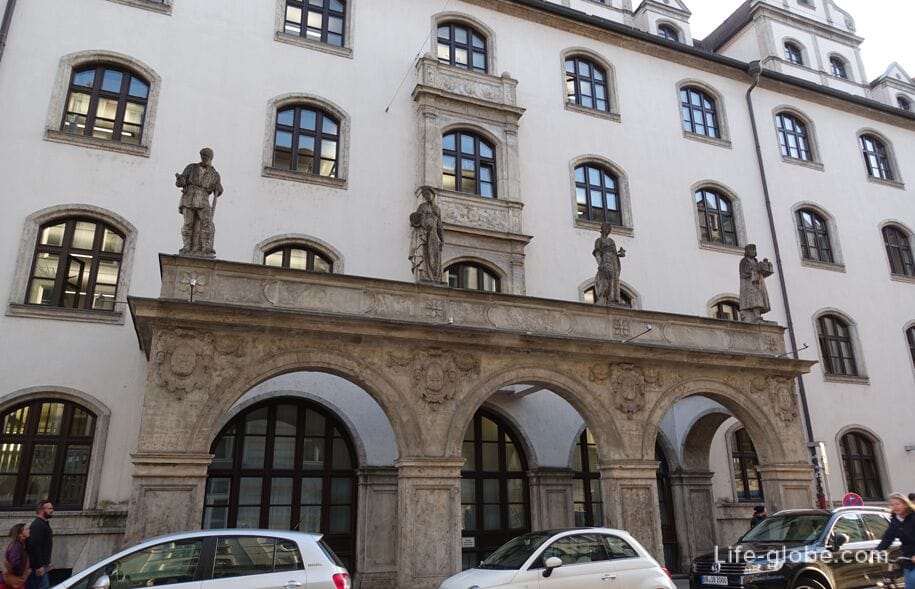
View of the South-Eastern wing of the building (the intersection of hoist and Materbates)

Church Of The Holy Spirit
Church of the Holy spirit (Heiliggeistkirche) - parish of the Catholic Church, which is one of the oldest churches in Munich, whose history dates back to the 13th century.
The original Church was a Romanesque chapel of Santa Catarina and belonged to the hospice of the Holy spirit.
After the hospice and the chapel was destroyed by fire in 1327, was built a new hospice and the chapel was replaced by a Gothic Church. The Church building was completed in 1392.
Over time, the hospice was demolished and the Church extended and transformed.
Outside the tal leaves the North side facade of the Church of the Holy spirit. Read more about Church of the Holy spirit...
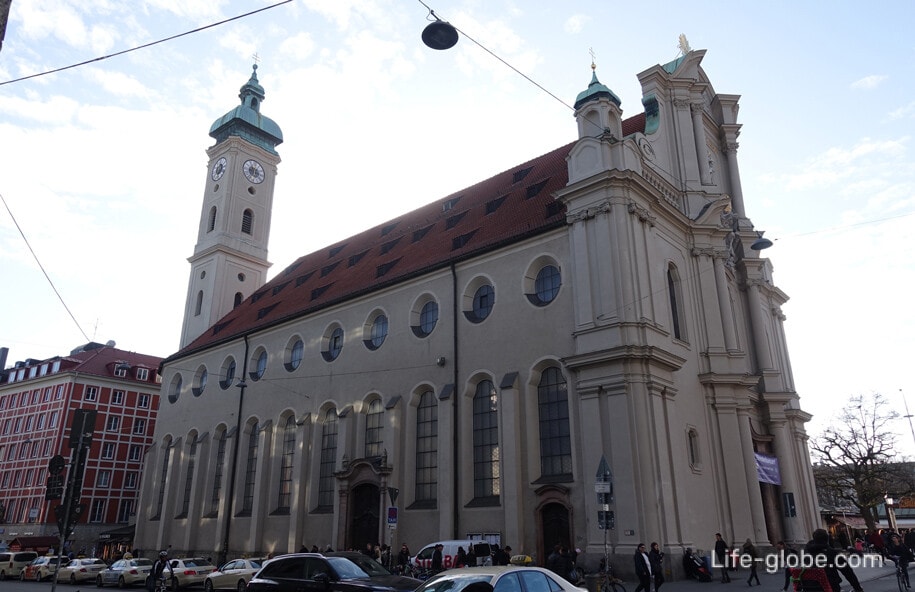
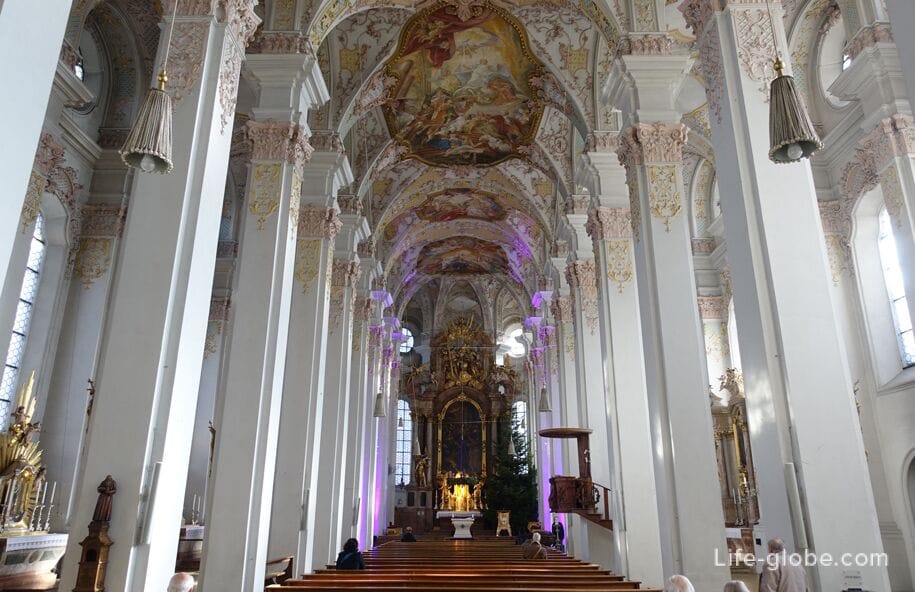
Fountain Mercury
The mercury fountain in the street tal (Merkurbrunnen / Marchenbrunnen) dates back to 1902 and 1975. Was made by the German sculptor Hugo Kauffman on the project of architect Friedrich von Tire and was initially appointed as a drinking fountain.
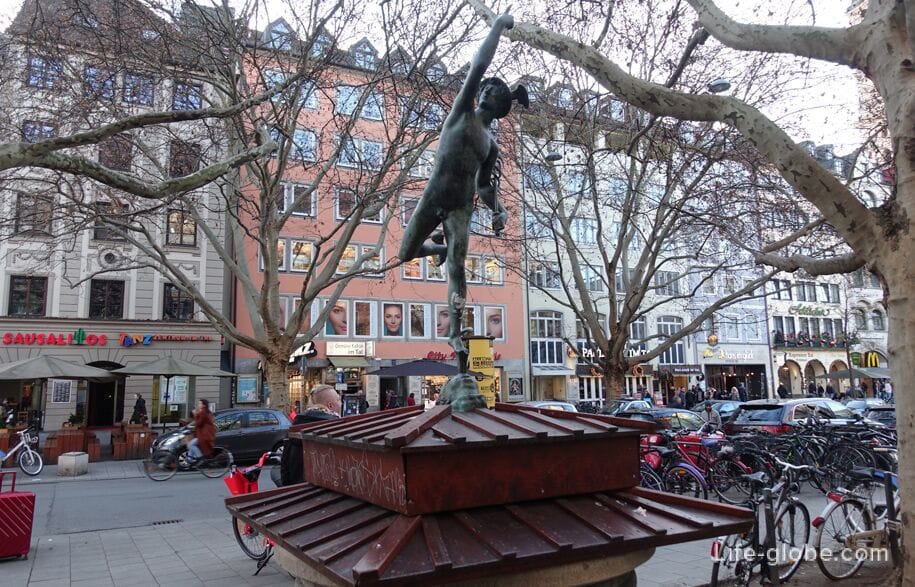
Bleak house
Bleak house (Kalter-Haus / Cutler house) is located at street tal 19 and is a residential and commercial building.
The house was built on the site of two previous buildings. In 1889 Johann Baptist Grassley, who belonged to two neighbouring buildings on the street tal, was planning a new building which would include two buildings. However, this plan was never implemented.
In 1894 Ludwig Herrmann got a double property. In collaboration with the architect Karl Herman, he has developed plans for an integrated residential and commercial building, which was built in 1894-1895.
Pincus of Culter, who comes from a Jewish family in Poland and founder of the men's clothing store in Rzeszow (Poland), moved his shop to the house on the street tal 19 in 1895. The store had the brand name "Golden 19" and not a single item of clothing in the store should not have more than 19 Reichsmarks (legal tender in Germany from 1924 to 1948).
A sign on the wall that says "Kalter Haus - Goldene 19 - 19 Tal" is reminiscent of a former clothing store.
The corner building has five floors. The first floor is clearly separated from the other floors by a horizontal cornice and is partly commercial. On the main facade, facing the street tal, at the level of the third and fourth floors there is a flat Bay window. The North wing of the building has three floors and slightly curved in accordance with curvature of the street Durnberger (Dürnbräugasse).
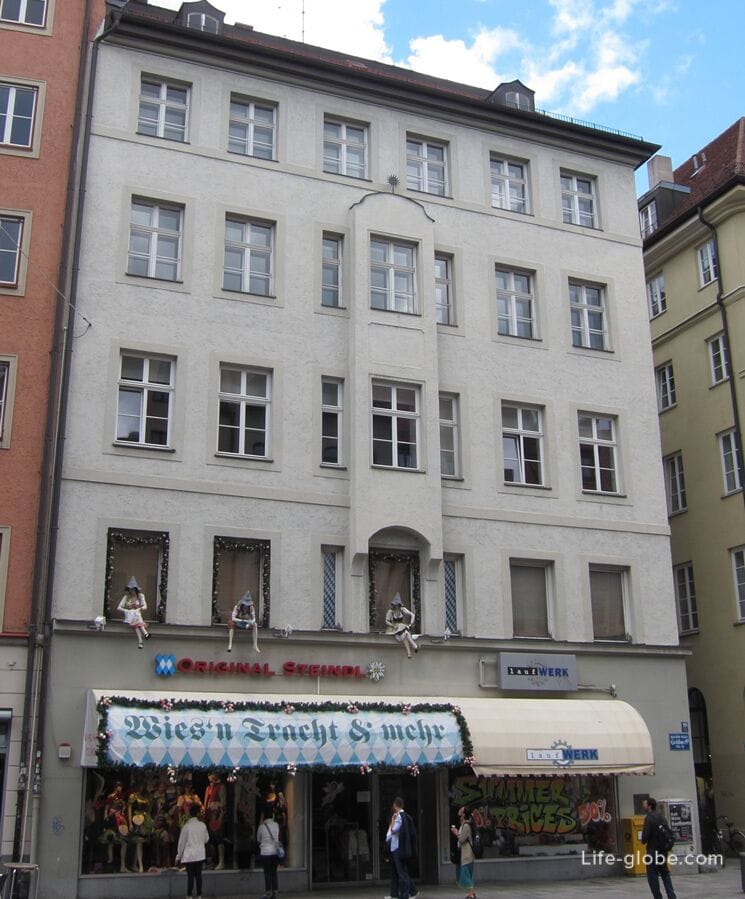
Building Sterneckerbrau
Sterneckerbrau (Sterneckerbräu) is a former brewery building of the same name and is located to the address: street tal, 38.
The brewery was located in this place since 1557, and belonged to the family brewers Steinegger (Sternegger) in the 16th and 17th centuries. In honor of the family and brewery 1696 was named street Sterneklasse (Sterneckergasse), which goes out to the hoist and which is partially located in a former brewery, since the structure is angular.
In the 19th century corner house brewery with Eastern neighbouring building was replaced by four-storey building with classical facade design. The house was demolished in 1901, and in 1901-1902 Heilmann and Littmann erected the present building for the owner of the brewery Josef Chejerla.
The building was low beer category, and gained fame and historical importance, because on 5 January 1919, the railway Bureau locksmith Anton Drexler together with Karl Harrer founded the German workers party (DAP / Deutsche Arbeiterpartei). In the future, party to hold a weekly meeting in the pub. At a meeting on 12 September 1919 in beer came Adolf Hitler and joined the ranks of the party, later headed it, and then renaming it the Nazi party, creating the most powerful party of Germany.
In the period from 1933 to 1945 in the pub was arranged a Museum of the Nazi party. The building survived the Second world war. In 1945 the Museum ball closed and partially destroyed. Later the building housed a restaurant. In 1957 the restaurant was closed and the first floor converted into a shop.
Currently, the historic building of the former brewery serves the residential and commercial building and is listed in the list of monuments of Bavaria. The house has five floors and a gable roof. The first floor is made in the form of an arcade, which is now used as Windows. The rear has a Bay window and a balcony.

The Museum of beer and Oktoberfest
The Museum of beer and Oktoberfest (Bier - und Oktoberfestmuseum) not directly located on the street tal, but is close to a street, address: Sterneklasse, 2.
The Museum is located in a historic house, one of the old Munich town houses, whose history dates back to 1340-th year.
The exhibition of the Museum tells of the historical building, as well as about beer, production, law on the purity of the drink, the history of foam from coming into monasteries, as well as the development and history of the Munich Oktoberfest.
In addition to the exhibition in the Museum you can taste the beer. The Museum has a restaurant. Read more about the Museum of beer and Oktoberfest...
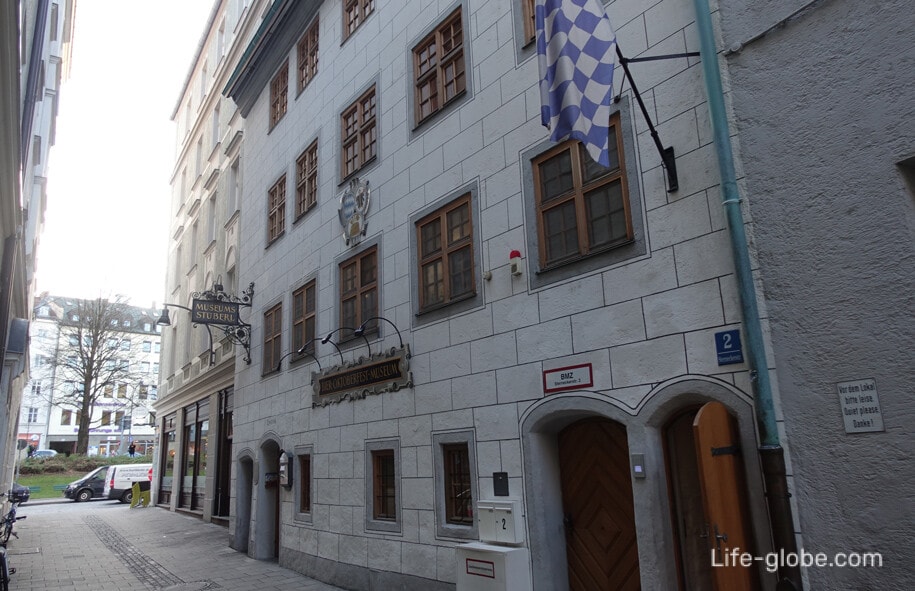
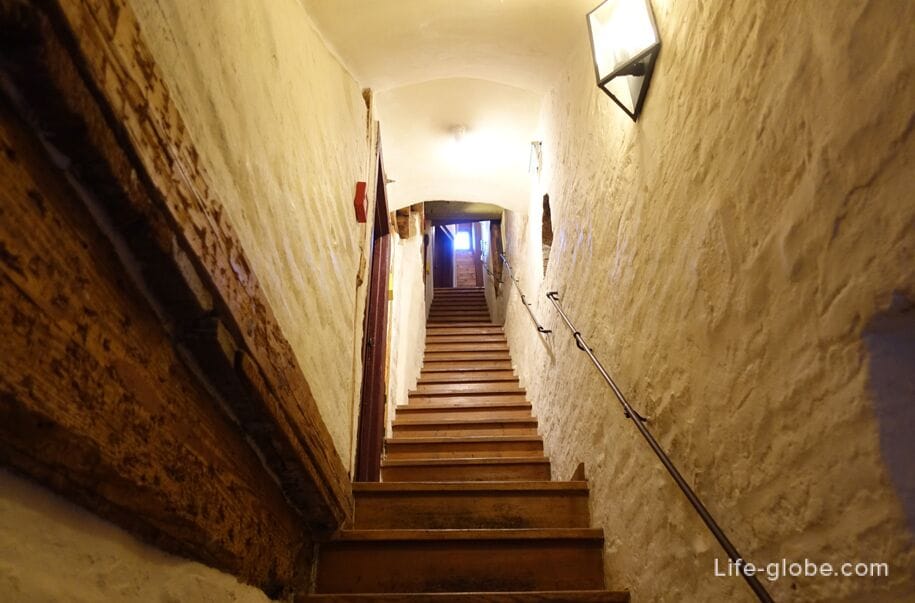
Isartor
Isartor gate (Isartor / Isartor) are the final object in the street tal, and marked the end of the street.
The gate was built by Ludwig IV the Bavarian in the course of large-scale expansion of the city and the construction of the second city wall between 1285 and 1337 years.
Today consist of: an impressive rectangular tower with a clock; the trapezoidal inner courtyard, which are arched passages; the backyard is surrounded by a wall, with two octagonal side towers with arched openings (passages).
On the East wall gate is the famous fresco "the triumph of Ludwig IV the Bavarian, after his victorious battle against Frederick III the Handsome of mühldorf in 1322".
In the lateral towers of the gate today houses the Museum of Karl Valentin (Valentin Karlstadt Musäum), dedicated to the Bavarian comedian Karl Valentin and his colleague, the actress Liesl Karlstadt. Read more about the Isartor gate and the Museum.

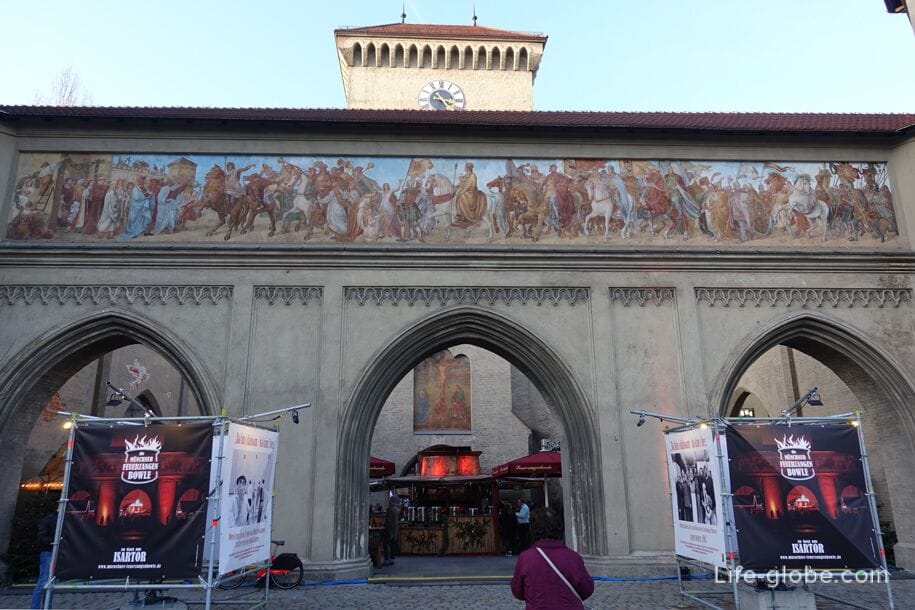
Where to stay on the street tal
The 4-star hotel Torbräu offers a restaurant, bar, Parking and free Wi-Fi.
Classically furnished rooms at family hotel feature a TV with satellite channels and a modern bathroom with a Hairdryer.
Room rates can be inclusive of the Breakfast buffet. Link to the hotel
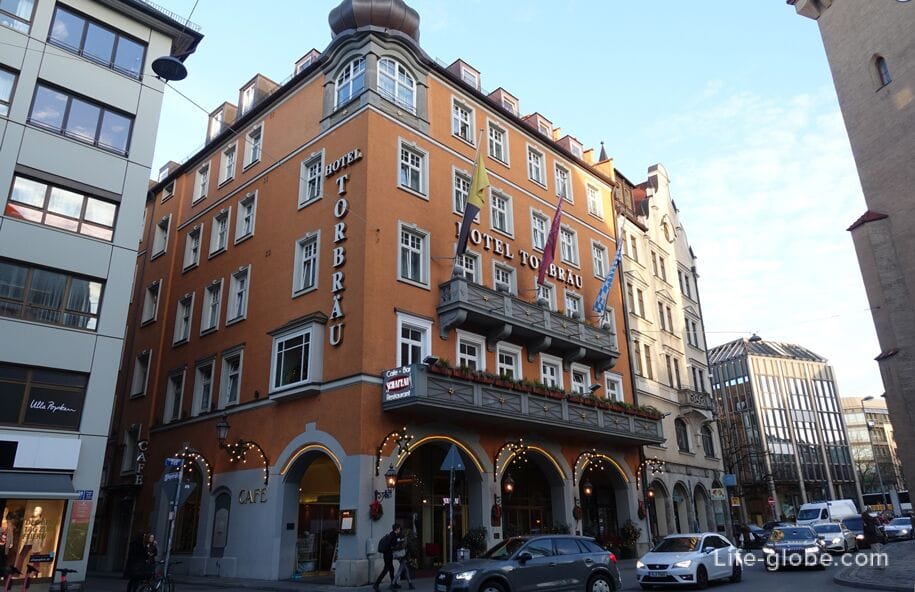
The Haus im Tal with fitness centre, a bar, a terrace, Concierge services, free Wi-Fi, bike rental and private Parking.
In the mornings, enjoy a continental Breakfast or Breakfast buffet. Link to the hotel
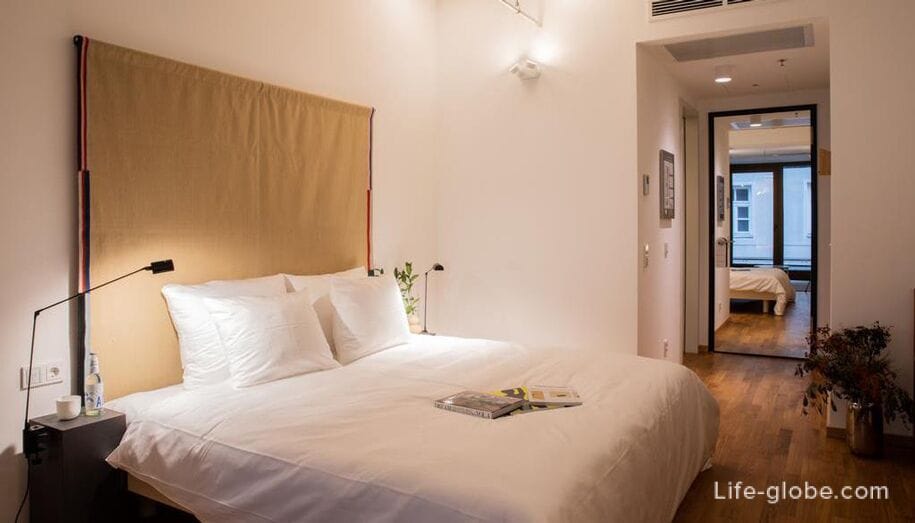
The 3-star hotel Schlicker with free Wi-Fi, free Parking, free Bicycle rental and family rooms.
Room rates include Breakfast. Link to the hotel

All accommodation in Munich, including near tal street in the historic center of the city, you can view and book here




